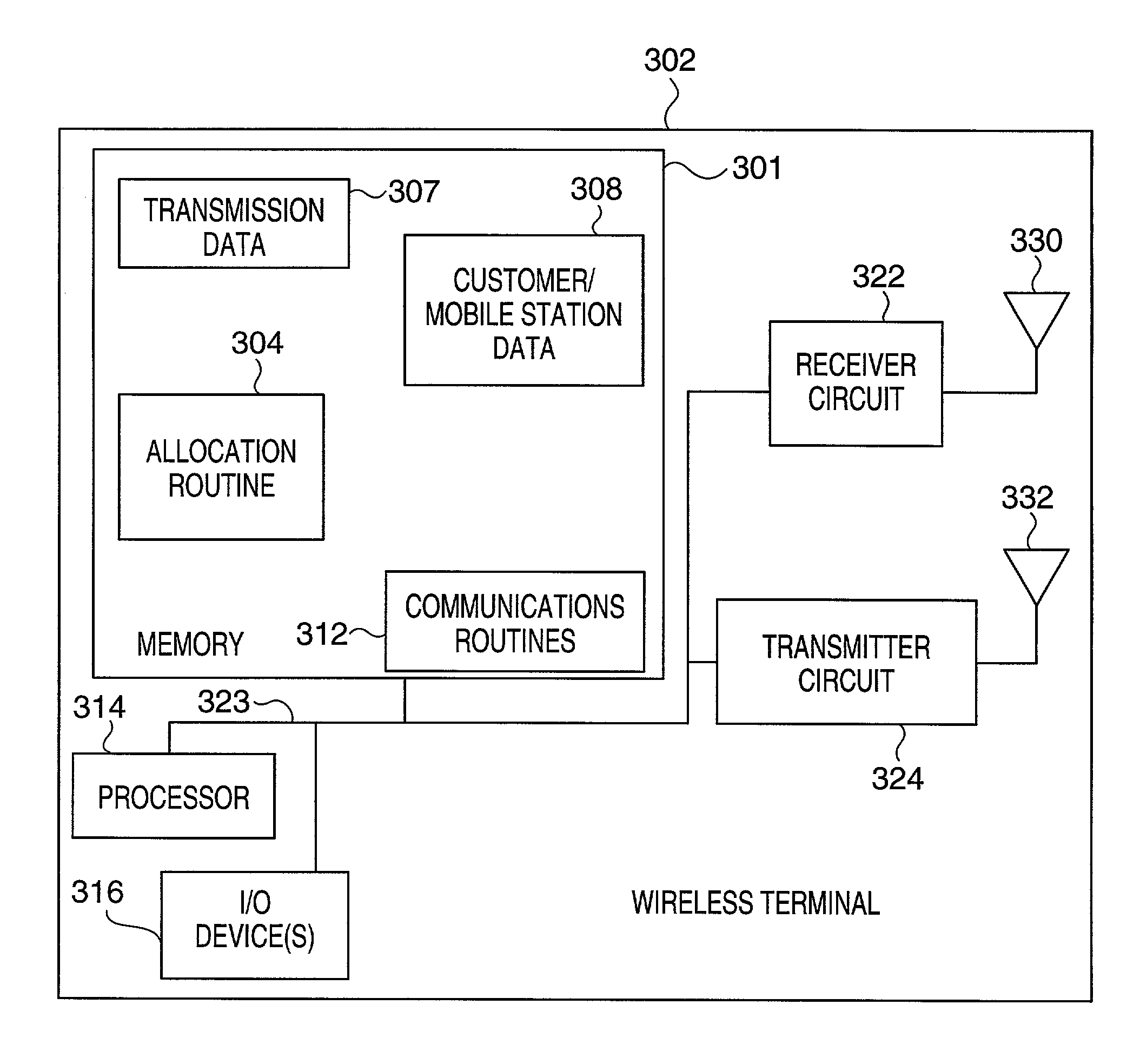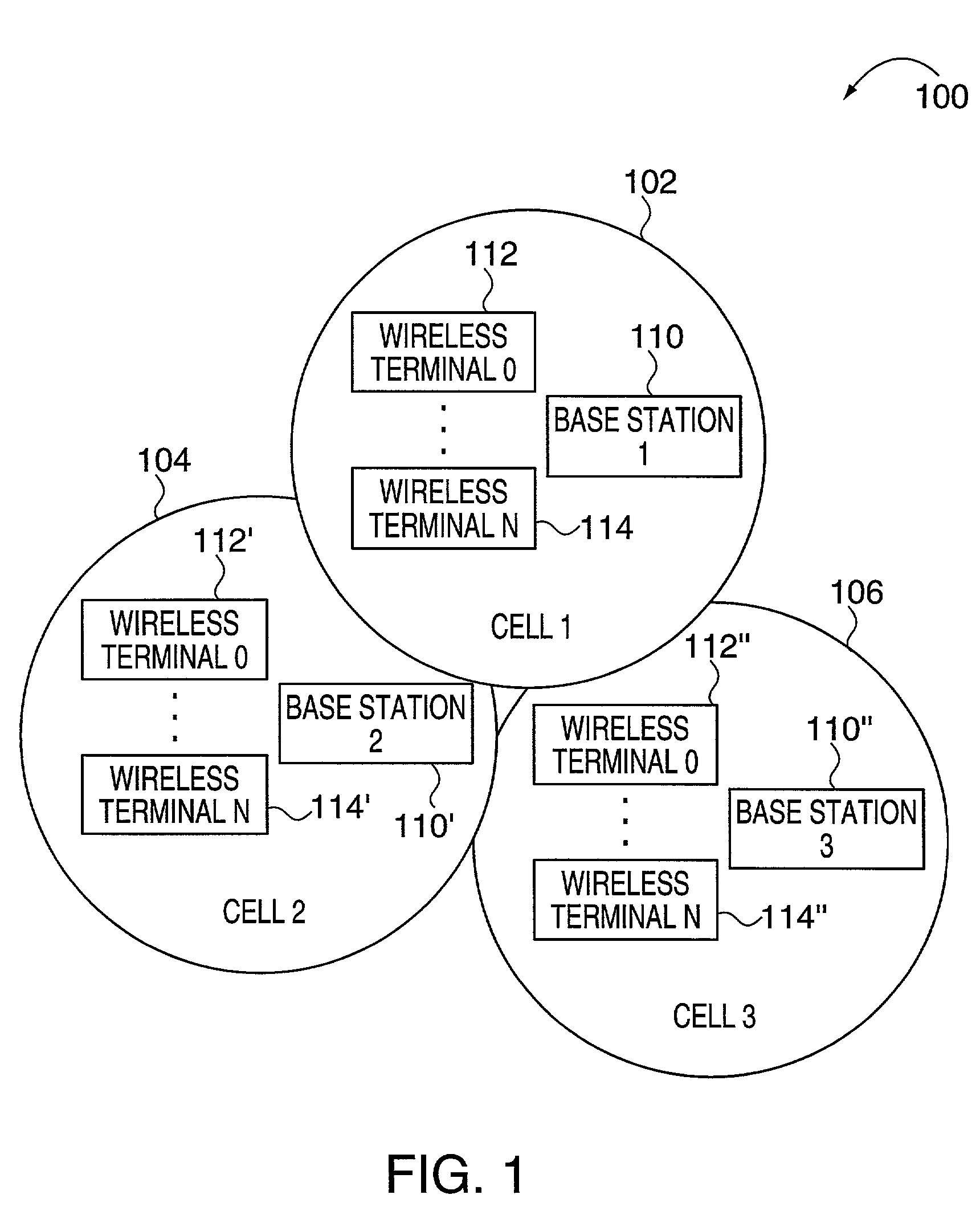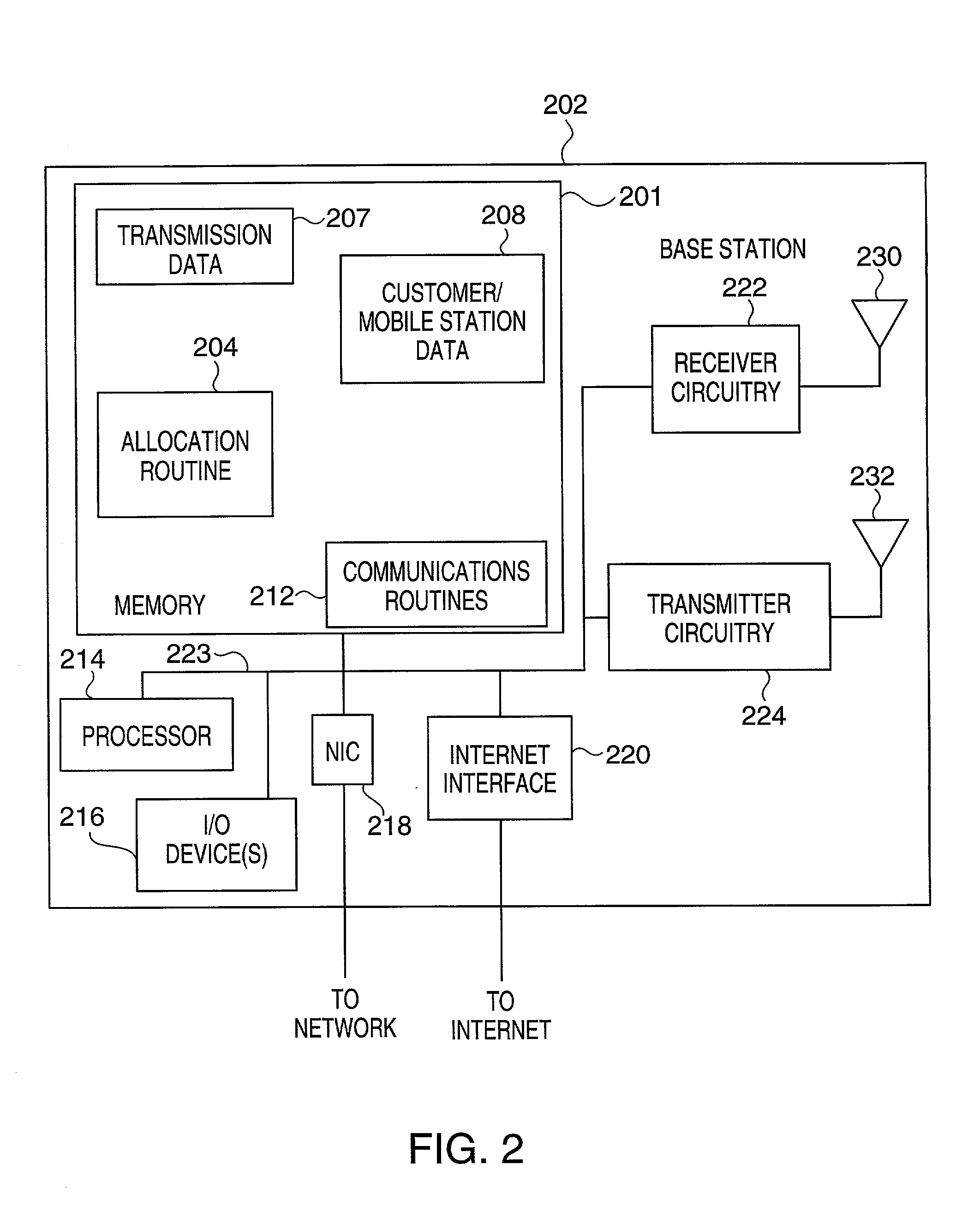Method of tone allocation for tone hopping sequences
a technology of tone hopping sequence and tone allocation, applied in the field of communication methods and apparatus, to achieve the effect of limiting the number of collusions
- Summary
- Abstract
- Description
- Claims
- Application Information
AI Technical Summary
Benefits of technology
Problems solved by technology
Method used
Image
Examples
Embodiment Construction
[0031] FIG. 1 shows a communication system 100 implemented in accordance with the present invention including multiple cells 102, 104, 106. Each cell 102, 104, 106 includes a plurality of wireless terminals (112, 114), (112', 114') (112", 114") and a base station 110, 110', 110", respectively. Each wireless terminal includes a transmitter as well as a receiver. The wireless terminals may be mobile communications devices such as cell phones, personal data assistants with wireless modems, etc. Each base station 110, 110', 110" performs tone hopping in accordance with the present invention. The wireless terminals use the hopping algorithm of the present invention along with information received from the base station to determine the tones that they can use to transmit data. Note that neighboring cells 102, 104, 106 overlap slightly thereby providing the potential for signal collisions between signals being transmitted by wireless devices in neighboring cells.
[0032] FIG. 2 illustrates a...
PUM
 Login to View More
Login to View More Abstract
Description
Claims
Application Information
 Login to View More
Login to View More - R&D
- Intellectual Property
- Life Sciences
- Materials
- Tech Scout
- Unparalleled Data Quality
- Higher Quality Content
- 60% Fewer Hallucinations
Browse by: Latest US Patents, China's latest patents, Technical Efficacy Thesaurus, Application Domain, Technology Topic, Popular Technical Reports.
© 2025 PatSnap. All rights reserved.Legal|Privacy policy|Modern Slavery Act Transparency Statement|Sitemap|About US| Contact US: help@patsnap.com



